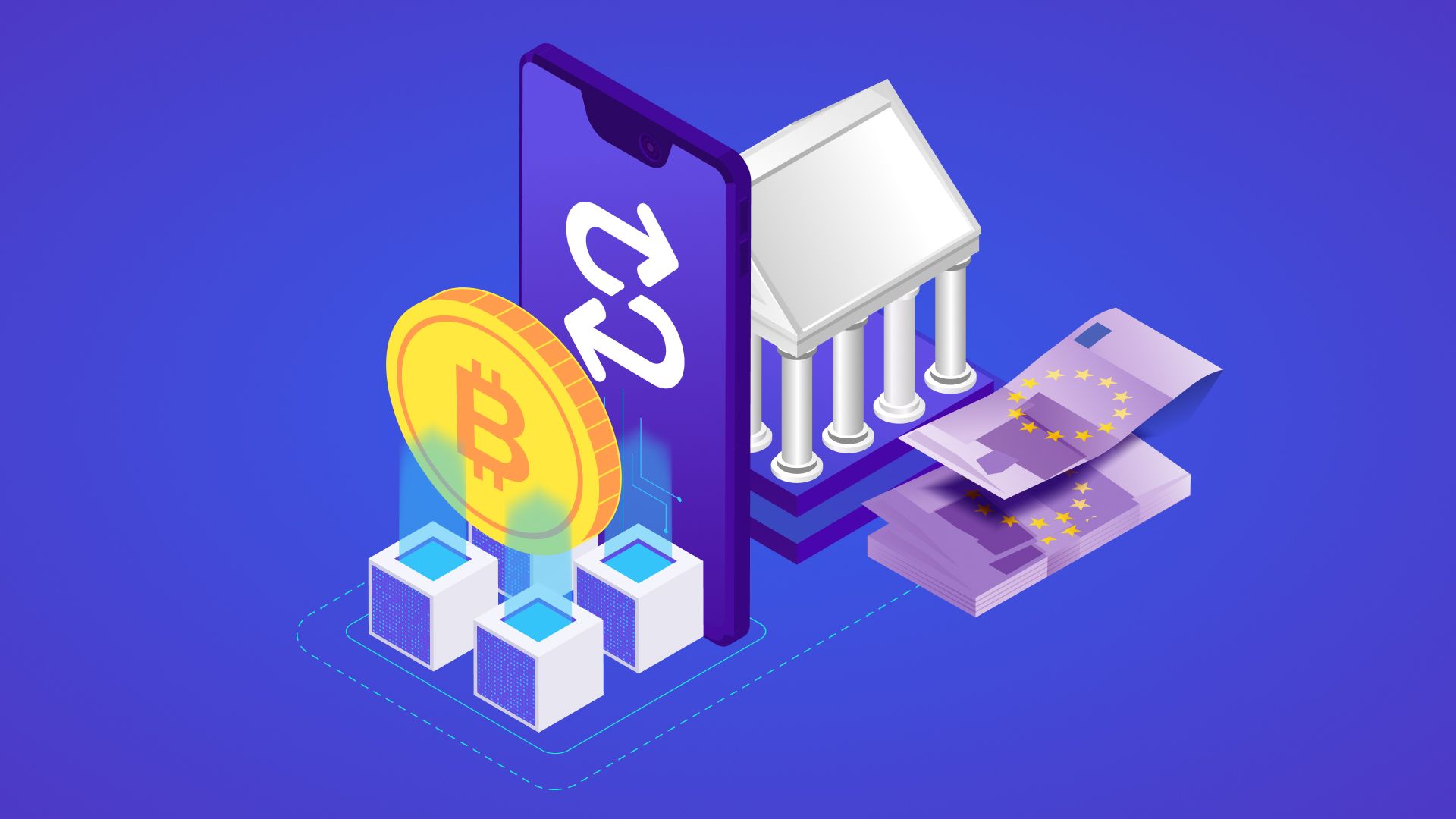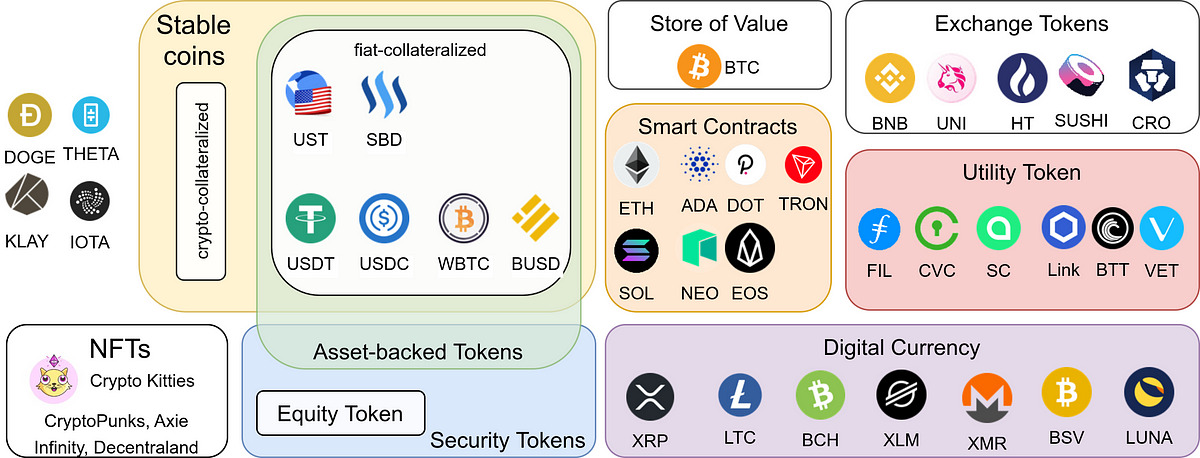What Is Cryptocurrency?
Cryptocurrency is a digital or virtual form of currency that utilizes cryptography for secure financial transactions, control the creation of additional units, and verify the transfer of assets. Unlike traditional currencies issued by governments, cryptocurrencies are decentralized and operate on a technology called blockchain.
At its core, cryptocurrency is based on the principles of cryptography, which involves the use of mathematical algorithms to encrypt and secure information. These algorithms ensure that transactions are secure, transparent, and immutable.
One defining characteristic of cryptocurrencies is that they are not controlled by central authorities like banks or governments. Instead, they rely on a network of computers or nodes that collectively maintain the blockchain ledger. This decentralized nature grants users the freedom to transact directly with one another without the need for intermediaries.
Another important feature of cryptocurrencies is their limited supply. Most cryptocurrencies have a predetermined maximum supply, which prevents inflation and instills confidence in their value. Bitcoin, the first and most well-known cryptocurrency, has a maximum supply of 21 million coins, making it a deflationary currency.
The rise of cryptocurrency has been facilitated by technological advancements and the digital age. Transactions can be conducted online, allowing for borderless and instantaneous transfers. Additionally, cryptocurrencies are highly divisible, with many having small fractional units, making them accessible to users from different socio-economic backgrounds.
Cryptocurrencies offer numerous advantages compared to traditional forms of currency. They enable individuals to have full control over their funds, eliminating the need for third-party involvement. Transactions are generally faster and cheaper since they do not require intermediaries like banks. Furthermore, cryptocurrencies can be used as a store of value or investment assets, with the potential for high returns.
However, it is important to note that cryptocurrencies also come with certain challenges and risks. The value of cryptocurrencies can be highly volatile, subject to rapid price fluctuations. Security is also a concern, as users need to protect their digital wallets and private keys from malicious actors.
In the next sections, we will delve into how cryptocurrencies work, their history, different types of cryptocurrencies, and the future prospects of this innovative form of currency.
How Does Cryptocurrency Work?
Cryptocurrencies operate on a decentralized technology called blockchain, which serves as a public ledger to record all transactions. This blockchain is maintained and verified by a network of computers or nodes spread across the globe. The decentralized nature of cryptocurrencies ensures transparency, security, and trust in the system.
When a transaction takes place, it is submitted to the network for verification. The transaction information is bundled into a block along with other pending transactions. The nodes on the network then compete to solve a complex mathematical problem known as mining.
Mining involves using powerful computers to perform calculations that validate and secure the transactions. The first miner to solve the problem adds the block to the blockchain, and the transaction becomes part of the permanent record. In return for their efforts, miners are rewarded with newly created cryptocurrency coins, incentivizing their participation in the network.
Once a transaction is confirmed and added to the blockchain, it is considered final and cannot be altered. This immutability ensures the integrity and trustworthiness of the entire system. Additionally, the blockchain allows anyone to view the transaction history, promoting transparency and accountability.
Each cryptocurrency has its own set of rules and protocols that govern its operation. For example, Bitcoin operates on the proof-of-work (PoW) algorithm, which requires miners to solve complex mathematical problems. On the other hand, Ethereum, the second-largest cryptocurrency, is transitioning to a proof-of-stake (PoS) consensus mechanism, where validators are chosen based on the number of coins they hold and are willing to “stake” as collateral.
One notable aspect of cryptocurrencies is the use of cryptographic keys. Each user has a unique pair of keys: a public key for receiving funds and a private key for authorizing transactions. The private key should be kept secure as it provides access to the funds associated with the corresponding public key.
Cryptocurrencies also allow for the creation of smart contracts, which are self-executing agreements written in code. Smart contracts automatically enforce the terms and conditions of an agreement, eliminating the need for intermediaries. This technology has revolutionized various industries by enabling decentralized applications and decentralized finance (DeFi) platforms.
While cryptocurrencies have numerous benefits and offer exciting technological advancements, it is essential to understand the risks associated with them. Price volatility, regulatory uncertainty, and the potential for fraudulent activities are among the challenges that investors and users should be aware of.
In the following sections, we will explore the history of cryptocurrencies, different types of cryptocurrencies available, and the benefits and risks associated with using them.
History of Cryptocurrency
The concept of digital currency can be traced back to the early 1980s when computer scientist David Chaum introduced the idea of cryptographically secure electronic money. However, it wasn’t until the late 2000s that cryptocurrencies emerged as we know them today.
The birth of cryptocurrency can be attributed to the release of Bitcoin in 2009 by an anonymous person or group using the pseudonym Satoshi Nakamoto. Bitcoin’s whitepaper, titled “Bitcoin: A Peer-to-Peer Electronic Cash System,” outlined the principles and technology behind this groundbreaking digital currency.
Bitcoin’s innovation lay in its use of blockchain technology, a decentralized ledger that records all transactions in a transparent and immutable manner. It solved the double-spending problem by preventing the same digital currency units from being spent multiple times, ensuring the integrity and security of transactions.
Bitcoin gained popularity as an alternative to traditional fiat currencies due to its decentralized nature and the potential for financial freedom it offered. However, it faced initial challenges and skeptics who questioned its legitimacy and viability.
Following Bitcoin’s success, numerous other cryptocurrencies, often referred to as altcoins, were introduced. These included Litecoin, Ripple, Ethereum, and many more, each with its own unique features and purposes.
Over the years, cryptocurrencies have experienced both significant growth and volatility. They have attracted millions of investors and users, sparked the development of new technology and ecosystems, and disrupted industries such as finance, gaming, and supply chain management.
Notably, the rise of Initial Coin Offerings (ICOs) in 2017 fueled a surge in the creation of new cryptocurrencies. ICOs allowed blockchain projects to raise funds by selling their own tokens to investors in exchange for established cryptocurrencies like Bitcoin or Ethereum.
However, the cryptocurrency market also faced challenges and setbacks. Security breaches, hacking incidents, and regulatory concerns led to periods of market volatility and uncertainty. Governments around the world began imposing regulations to address issues such as money laundering, tax evasion, and investor protection.
Despite the challenges, cryptocurrencies continue to evolve and innovate. The development of blockchain technology has expanded beyond financial transactions and is being applied to various sectors, including healthcare, supply chain management, and voting systems.
The history of cryptocurrency demonstrates the disruptive potential of decentralized digital currencies. They offer a new paradigm of trust, transparency, and financial independence. As cryptocurrencies continue to gain mainstream adoption, their impact on the global economy and the way we conduct transactions is expected to grow significantly.
Types of Cryptocurrency
Cryptocurrencies come in various forms, each with its own unique features, purposes, and underlying technologies. Here are some of the most prominent types of cryptocurrency:
- Bitcoin (BTC): Bitcoin is the first and most well-known cryptocurrency. It operates on a peer-to-peer network, utilizes a proof-of-work consensus algorithm, and aims to be a decentralized digital currency for secure, borderless transactions.
- Ethereum (ETH): Ethereum is a decentralized platform that enables the creation and execution of smart contracts. It introduced the concept of programmable money, allowing developers to build decentralized applications (DApps) using its native cryptocurrency Ether.
- Litecoin (LTC): Litecoin was created as a “lite” alternative to Bitcoin. It offers faster block generation times and a different hashing algorithm, making it more suitable for everyday transactions. Litecoin aims to be a digital silver to Bitcoin’s digital gold.
- Ripple (XRP): Ripple is both a cryptocurrency and a payment protocol designed for fast and low-cost international money transfers. It aims to facilitate seamless transactions between financial institutions and improve liquidity in the global financial system.
- Bitcoin Cash (BCH): Bitcoin Cash is a fork of Bitcoin that emerged in 2017. It was created to address scalability issues and enable faster transactions. Bitcoin Cash aims to be a peer-to-peer electronic cash system that can be used for day-to-day transactions.
- Stablecoins: Stablecoins are cryptocurrencies designed to be stable in value by pegging them to a reserve asset such as fiat currency, gold, or other cryptocurrencies. Examples of stablecoins include Tether (USDT), USD Coin (USDC), and Dai (DAI).
- Privacy Coins: Privacy coins focus on enhancing user privacy and anonymity. These cryptocurrencies employ various techniques such as ring signatures, stealth addresses, and confidential transactions to obfuscate transaction details. Examples include Monero (XMR), Zcash (ZEC), and Dash (DASH).
These are just a few examples of the wide variety of cryptocurrencies available today. Each cryptocurrency offers different features and caters to diverse use cases. Some focus on providing a decentralized peer-to-peer digital currency, while others prioritize smart contracts, privacy, or stable value.
As the cryptocurrency market continues to evolve, new types of cryptocurrencies are being introduced, addressing specific needs and pushing the boundaries of technology. It is important for investors and users to research and understand the unique characteristics of each cryptocurrency before investing or utilizing them.
Benefits of Cryptocurrency
Cryptocurrencies offer several significant benefits that have contributed to their increasing popularity and adoption. Here are some of the key advantages of using cryptocurrencies:
- Decentralization: Cryptocurrencies operate on a decentralized network, eliminating the need for intermediaries such as banks. This decentralization gives users full control over their funds and facilitates peer-to-peer transactions without the constraints imposed by third parties. It also reduces costs associated with traditional financial systems.
- Security: Cryptocurrencies utilize advanced cryptographic techniques to secure transactions and digital wallets. The decentralized nature of blockchain technology makes it difficult for hackers to manipulate or alter transactions. Additionally, ownership of cryptocurrency funds is based on cryptographic keys, providing strong protection against unauthorized access.
- Financial Inclusion: Cryptocurrencies have the potential to provide financial services to the unbanked or underbanked populations across the globe. Individuals without access to traditional banking services can use cryptocurrencies to store, send, and receive funds with just a smartphone and an internet connection.
- Fast and Low-Cost Transactions: Cryptocurrency transactions can be processed quickly, especially compared to traditional banking systems, which often involve intermediaries and delays. Additionally, transaction fees for cryptocurrencies are typically lower than traditional financial systems, making them particularly advantageous for international transfers.
- Privacy and Anonymity: Certain cryptocurrencies provide enhanced privacy features, allowing users to keep their financial transactions private. While the level of privacy varies between cryptocurrencies, it offers individuals an option to maintain their financial activities confidentially.
- Global Accessibility: Cryptocurrencies transcend geographical boundaries, enabling anyone with an internet connection to participate in the global economy. This accessibility promotes financial inclusivity, empowers individuals, and removes barriers traditionally associated with cross-border transactions.
- Investment Opportunities: Cryptocurrencies have the potential for high returns as an investment asset class. Many people invest in cryptocurrencies with the expectation that their value will increase over time. This investment opportunity has attracted a significant number of individuals and institutional investors to the cryptocurrency market.
- Innovation and Technological Advancement: The development of cryptocurrencies has spurred innovation and technological advancements. Blockchain technology, the foundation of cryptocurrencies, has been applied to various industries, leading to the development of decentralized applications (DApps), smart contracts, and the evolution of the Internet of Things (IoT).
These benefits highlight the transformative potential of cryptocurrencies in revolutionizing traditional financial systems, promoting financial inclusion, and fostering innovation and economic growth. However, it is important to note that cryptocurrencies also come with risks and challenges that users and investors must carefully consider.
Risks and Challenges of Cryptocurrency
While cryptocurrencies offer many advantages, they also present certain risks and challenges that users and investors need to be aware of. Here are some of the key risks associated with cryptocurrencies:
- Volatility: Cryptocurrency prices are known for their significant volatility. Prices can experience rapid and substantial fluctuations, resulting in potential gains or losses for investors. The volatility of cryptocurrencies makes them a speculative investment and can pose risks for individuals who are not prepared for such price swings.
- Security Risks: While cryptocurrencies leverage advanced cryptographic techniques to secure transactions, there have been instances of security breaches and hacking incidents. Cybercriminals may attempt to steal funds from digital wallets or exploit vulnerabilities in cryptocurrency exchanges. It is crucial for users to take precautionary measures, such as using secure wallets and employing strong security practices.
- Regulatory Uncertainty: The regulatory landscape surrounding cryptocurrencies is still evolving and can vary significantly across jurisdictions. Governments may introduce regulations that can impact the use, taxation, and trading of cryptocurrencies. Uncertainty about future regulations can create anxiety and impact the market stability and adoption of cryptocurrencies.
- Lack of Consumer Protection: As cryptocurrencies operate outside traditional financial systems, they do not have the same level of consumer protection mechanisms. If funds are lost or stolen, it can be challenging to recover them. Additionally, fraudulent projects and scams can arise in the cryptocurrency space, targeting unsuspecting investors.
- Technical Challenges: Cryptocurrencies and blockchain technology are complex, and there are technical challenges that need to be overcome. Issues such as scalability, transaction speed, and energy consumption have been subjects of debate and require ongoing development and improvement to achieve widespread adoption.
- Market Manipulation: The cryptocurrency market is susceptible to market manipulation due to its relatively small size compared to traditional financial markets. Manipulative practices, such as “pump and dump” schemes, can artificially inflate or deflate the prices of certain cryptocurrencies, leading to substantial losses for investors.
- Environmental Impact: The mining process associated with some cryptocurrencies, such as Bitcoin, requires substantial computational power and energy consumption. Critics argue that the carbon footprint associated with mining activities is detrimental to the environment, raising concerns about the sustainability of certain cryptocurrencies.
- Legal and Compliance Risks: As cryptocurrencies gain mainstream attention, legal and compliance risks continue to emerge. Compliance with anti-money laundering (AML) and know-your-customer (KYC) regulations can be challenging. Additionally, the use of cryptocurrencies in illicit activities, such as money laundering and illicit transactions, raises concerns for regulatory authorities.
Understanding and addressing these risks and challenges is essential for individuals, investors, and businesses involved in the cryptocurrency space. By staying informed and exercising caution, participants can mitigate potential risks and make more informed decisions.
How to Use Cryptocurrency
Using cryptocurrency involves a series of steps to ensure secure and efficient transactions. Here is a general guide on how to use cryptocurrency:
- Choose a Cryptocurrency Wallet: To store and manage your cryptocurrencies, you’ll need a digital wallet. There are various types of wallets available, including software wallets, hardware wallets, and online wallets. Choose a wallet that fits your needs in terms of security, convenience, and accessibility.
- Obtain Cryptocurrency: Acquire cryptocurrency by purchasing it from a crypto exchange, participating in Initial Coin Offerings (ICOs), or accepting it in exchange for goods or services. Ensure that you choose reputable exchanges and platforms for acquiring cryptocurrencies.
- Secure Your Private Keys: Your private keys are essential for accessing and controlling your cryptocurrency funds. Safeguard your private keys by storing them in a secure and offline location. Be cautious of phishing attempts and keep your private keys confidential.
- Transact with Cryptocurrency: To send or receive cryptocurrency, you need the recipient’s wallet address. Open your wallet software or app and select the option to send funds. Enter the recipient’s wallet address accurately, specify the desired amount, and confirm the transaction. Always double-check the recipient’s address to avoid any mistakes.
- Wait for Confirmations: After initiating a transaction, it needs to be confirmed by the network. The transaction confirmation process varies depending on the cryptocurrency and the network it operates on. In general, it may take several minutes for the transaction to be verified and added to the blockchain.
- Monitor Transaction Status: Use the transaction ID (TXID) provided by your wallet or the transaction history tab on the blockchain explorer to monitor the status of your transaction. This allows you to track the progress and ensure that it has been successfully processed.
- Stay Informed and Educated: Cryptocurrency technologies and practices are continually evolving. Stay updated with the latest news, trends, and security practices in the cryptocurrency space. Educate yourself about different cryptocurrencies and the specific characteristics of the assets you hold.
- Be Mindful of Tax Obligations: Depending on your jurisdiction, owning and transacting with cryptocurrencies may have tax implications. Understand the tax regulations related to cryptocurrencies in your country and ensure compliance with reporting and tax obligations.
It’s important to note that while these steps provide a general overview, the specific procedures may differ depending on the cryptocurrency and the wallet you are using. It’s recommended to familiarize yourself with the specific instructions provided by your wallet provider and to follow best practices for secure cryptocurrency usage.
By following these steps and exercising caution, you can confidently engage in transactions and make the most out of your cryptocurrency holdings.
Cryptocurrency Wallets
Cryptocurrency wallets are digital tools that allow users to securely store, manage, and interact with their cryptocurrencies. These wallets come in various forms, each offering different levels of security, accessibility, and convenience. Here are the main types of cryptocurrency wallets:
- Software Wallets: Software wallets are applications that can be installed on your computer or smartphone. They provide a user-friendly interface to manage your cryptocurrencies. Software wallets can be further categorized into:
- Desktop Wallets: Installed on your personal computer, desktop wallets provide high security as they store your private keys locally. Examples include Exodus and Electrum.
- Mobile Wallets: Installed on your smartphone, mobile wallets offer accessibility and convenience. They are useful for making payments on-the-go. Examples include Trust Wallet and Mycelium.
- Hardware Wallets: Hardware wallets are physical devices designed to secure your private keys offline. They provide the highest level of security as your private keys are stored on the device and protected from online threats. Hardware wallets, such as Ledger and Trezor, require a physical connection to your computer or smartphone to initiate transactions.
- Online Wallets: Online wallets, also known as web wallets, are cloud-based platforms that store your private keys on a remote server. They offer convenience and accessibility as you can access your cryptocurrencies from any device with internet access. However, online wallets involve trust in the wallet provider’s security measures. Examples include Coinbase Wallet and MetaMask.
- Paper Wallets: Paper wallets involve printing or writing down your private keys on a piece of paper. They are physical documents that can be stored in a safe place, providing offline storage and secure offline transactions. However, it is crucial to keep paper wallets safe from physical damage and unauthorized access.
- Hardware-Software Hybrid Wallets: Some wallets combine the security of hardware wallets with the convenience of software wallets. These wallets use a hardware device to generate and store private keys, while software components are used to initiate and manage transactions. Examples include the Ledger Live software paired with a Ledger hardware wallet.
When choosing a cryptocurrency wallet, consider factors such as security, user experience, supported cryptocurrencies, and the level of control you require over your private keys. It is crucial to research and select trusted wallet providers and to take necessary security measures, such as using multi-factor authentication and keeping your software updated.
It is also advisable to have multiple wallets for different purposes. For example, you could have a hardware wallet for long-term storage and a mobile wallet for day-to-day transactions. Diversifying your wallets can provide an extra layer of security and convenience.
Remember, the security and protection of your cryptocurrencies ultimately rely on your responsibility to safeguard your private keys. Regularly back up your wallet and ensure you have proper contingency plans in case of loss or theft of your wallet or access credentials.
By choosing appropriate wallets and practicing good security habits, you can ensure the safety and accessibility of your cryptocurrencies.
Buying and Selling Cryptocurrency
Buying and selling cryptocurrency involves the process of acquiring or disposing of digital assets for fiat currency or other cryptocurrencies. Here is a general guide on how to buy and sell cryptocurrency:
- Choose a Cryptocurrency Exchange: Select a reputable cryptocurrency exchange that supports the cryptocurrencies you want to buy or sell. Research the exchange’s security measures, fees, liquidity, and user reviews before creating an account.
- Create an Account: Sign up for an account on the chosen exchange. Complete the required verification process to comply with regulatory obligations, which may include providing identification documents and proof of address.
- Deposit Funds: Deposit fiat currency or other cryptocurrencies into your exchange account. This can usually be done by linking your bank account, using a debit or credit card, or transferring cryptocurrencies from another wallet or exchange.
- Place an Order: Determine the type of order you want to place. Market orders purchase or sell cryptocurrencies at the current market price, while limit orders allow you to set the price at which you want to buy or sell. Enter the desired quantity and price (if applicable) and submit your order.
- Execute the Order: Once your order is placed, the exchange will try to match your order with other users on the platform. If a match is found, the transaction is executed, and the ownership of the cryptocurrencies is transferred accordingly.
- Monitor and Manage: After your transaction is completed, monitor your account to ensure that the funds or cryptocurrencies are correctly credited or debited. Keep track of your investments and make any necessary adjustments based on market conditions or your investment strategy.
- Withdraw Funds: If you wish to withdraw your funds from the exchange, navigate to the withdrawal section of the platform. Select the currency and the destination wallet address where you want the funds to be sent. Confirm the transaction and wait for the withdrawal to be processed.
It is important to note that each exchange may have its own specific procedures and requirements for buying and selling cryptocurrency. Pay close attention to the instructions provided by the exchange and ensure that you are familiar with their terms and conditions.
When engaging in cryptocurrency trading, consider the following tips:
- Do thorough research on the cryptocurrencies you wish to buy or sell, including their fundamentals, market trends, and potential risks.
- Consider using dollar cost averaging (DCA) as a strategy for purchasing cryptocurrencies over time to mitigate the impact of price volatility.
- Be mindful of transaction fees, especially for frequent trading. Compare fees among different exchanges and choose the most cost-effective option.
- Keep your private keys secure if you decide to use an external wallet for storing your cryptocurrencies. Properly manage your private keys to prevent unauthorized access or loss of funds.
- Stay informed about market developments, news, and regulatory changes that can impact the value and accessibility of cryptocurrencies.
Remember that the value of cryptocurrencies can be highly volatile, and investing in them carries risks. Plan your investments based on your risk tolerance and consult with a financial advisor if needed.
By following these guidelines and staying informed, buying and selling cryptocurrency can be a straightforward process. However, always exercise caution and make well-informed decisions to safeguard your investments.
Popular Cryptocurrencies
The world of cryptocurrencies is vast and continually evolving, with thousands of digital assets available in the market. Here are some of the most popular and influential cryptocurrencies:
- Bitcoin (BTC): Bitcoin is the pioneering cryptocurrency created by Satoshi Nakamoto. It remains the most well-known and valuable digital currency, often referred to as digital gold. Bitcoin’s limited supply and widespread adoption have solidified its position as a store of value and a medium of exchange.
- Ethereum (ETH): Ethereum is a decentralized platform that introduced smart contracts and fueled the growth of decentralized applications (DApps) and the concept of initial coin offerings (ICOs). Its native cryptocurrency, Ether, is used within the Ethereum ecosystem for various transactions and as a fuel for executing smart contracts.
- Ripple (XRP): Ripple aims to facilitate fast and low-cost international money transfers. It operates on a payment protocol and digital payment network used by financial institutions worldwide. Ripple’s XRP token is designed to improve liquidity and make cross-border transactions more efficient.
- Litecoin (LTC): Created by Charlie Lee, a former Google engineer, Litecoin is often considered the silver to Bitcoin’s gold. It offers faster transaction confirmation times and a different hashing algorithm, making it more suitable for everyday transactions.
- Bitcoin Cash (BCH): Bitcoin Cash emerged as a result of a hard fork from Bitcoin in 2017. It aimed to address scalability issues and offer faster transactions. Bitcoin Cash emphasizes its usability as electronic cash for day-to-day transactions.
- Cardano (ADA): Cardano is a blockchain platform that aims to enable the development of secure and scalable smart contracts and DApps. It uses a unique proof-of-stake consensus mechanism and is characterized by strong academic research and a focus on scalability and sustainability.
- Polkadot (DOT): Polkadot is a multi-chain platform that allows different blockchains to interoperate and share information. It aims to create a decentralized and scalable ecosystem for various applications and decentralized finance (DeFi) solutions.
- Chainlink (LINK): Chainlink is a decentralized oracle network that connects smart contracts with real-world data and events. It aims to enable secure and reliable interactions between blockchains and external data sources, providing off-chain connectivity for decentralized applications.
- Stellar (XLM): Stellar is a blockchain-based platform designed to facilitate fast and low-cost international money transfers, similar to Ripple. It focuses on financial inclusion and provides a platform for token issuance and asset transfers.
- Cardano (ADA): Cardano is a blockchain platform that aims to enable the development of secure and scalable smart contracts and DApps. It uses a unique proof-of-stake consensus mechanism and is characterized by strong academic research and a focus on scalability and sustainability.
These are just a few examples of popular cryptocurrencies, each with its unique features and use cases. The popularity and relevance of different cryptocurrencies may vary over time as new projects emerge, technological advancements are made, and market dynamics evolve.
When considering investing in cryptocurrencies, it is crucial to conduct thorough research, evaluate the fundamentals of each project, and assess the associated risks. Understanding the purpose, team, partnerships, and adoption potential of a cryptocurrency can help inform your investment decisions.
Remember that the cryptocurrency market is highly volatile, and investing in cryptocurrencies carries risks. It is important to diversify your investments, stay informed about market trends, and consider professional advice if needed.
The Future of Cryptocurrency
The future of cryptocurrency is a topic of great interest and speculation, given its potential to disrupt traditional financial systems and reshape various industries. While the future is uncertain, several trends and developments suggest a promising outlook for cryptocurrencies:
- Mainstream Adoption: Cryptocurrencies are gradually gaining mainstream acceptance. Major companies, financial institutions, and even governments are embracing cryptocurrencies and exploring their potential use cases. Increased adoption can lead to wider accessibility, improved liquidity, and enhanced credibility for cryptocurrencies.
- Financial Inclusion: Cryptocurrencies have the potential to bridge the gap in financial inclusion, providing individuals in underserved regions access to banking services. With just a smartphone and internet connection, people can participate in the global economy, send and receive funds, and access essential financial services.
- Decentralized Finance (DeFi): DeFi has emerged as a rapidly growing sector within the cryptocurrency industry. It encompasses various financial applications and services built on blockchain technology, including lending, borrowing, decentralized exchanges, and yield farming. DeFi offers the potential to democratize financial services, providing individuals with greater control and transparency.
- Central Bank Digital Currencies (CBDCs): Central banks around the world are exploring the concept of issuing their own digital currencies, known as CBDCs. These digital currencies aim to provide a secure and efficient means of conducting transactions backed by the trust and stability of central banks. CBDCs have the potential to coexist with cryptocurrencies and shape the future of digital finance.
- Blockchain Technology: Beyond cryptocurrencies, blockchain technology continues to advance and find applications in various sectors. The decentralized and transparent nature of blockchain can revolutionize industries such as supply chain management, healthcare, voting systems, and more. Blockchain has the potential to enhance efficiency, security, and trust across multiple domains.
- Technological Innovations: The cryptocurrency ecosystem is constantly evolving, with ongoing technological innovations. Layer 2 scaling solutions, such as the Lightning Network for Bitcoin, aim to enhance scalability and transaction speed. Additionally, advancements in privacy protocols and interoperability standards contribute to the growth and maturation of the cryptocurrency ecosystem.
- Regulatory Frameworks: Regulatory bodies around the world are actively working to establish clear guidelines and frameworks for cryptocurrencies. Regulated environments can promote trust and confidence among investors and users, leading to increased adoption and integration of cryptocurrencies into mainstream financial systems.
While the future of cryptocurrency appears promising, challenges remain. Scalability, energy consumption, regulatory uncertainties, and security concerns are areas that need further exploration and resolution.
The future of cryptocurrency will depend on technological advancements, regulatory developments, market dynamics, and the collective efforts of various stakeholders. Continued innovation, collaboration, and responsible adoption are crucial factors in shaping a sustainable future for cryptocurrencies.
As the landscape evolves, it is essential for individuals, businesses, and policymakers to stay informed, adapt to changing trends, and embrace the opportunities presented by this rapidly growing and transformative technology.

























